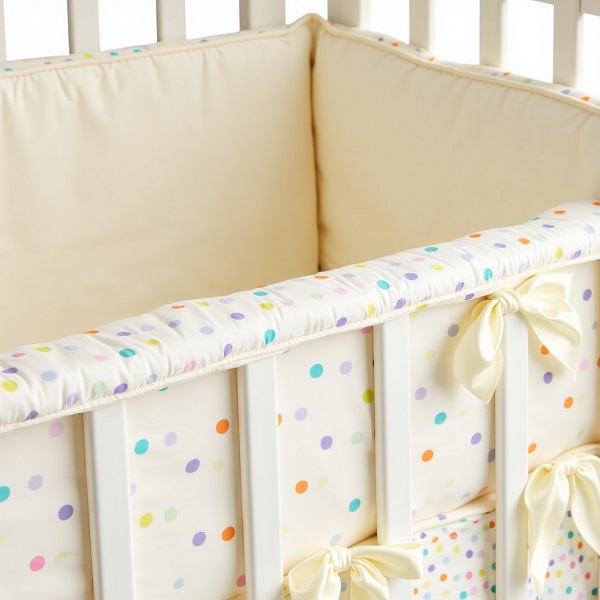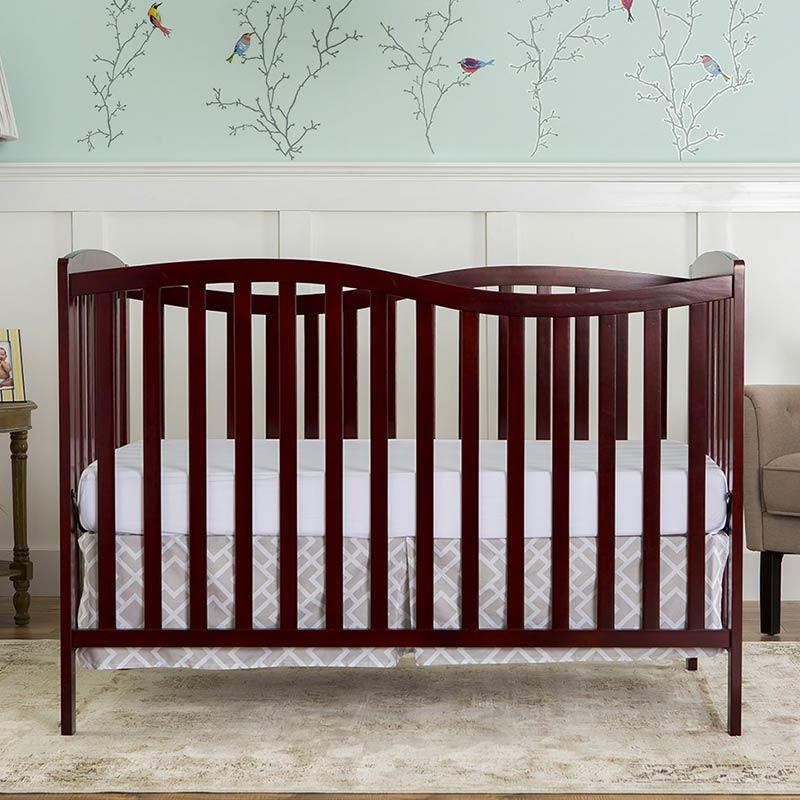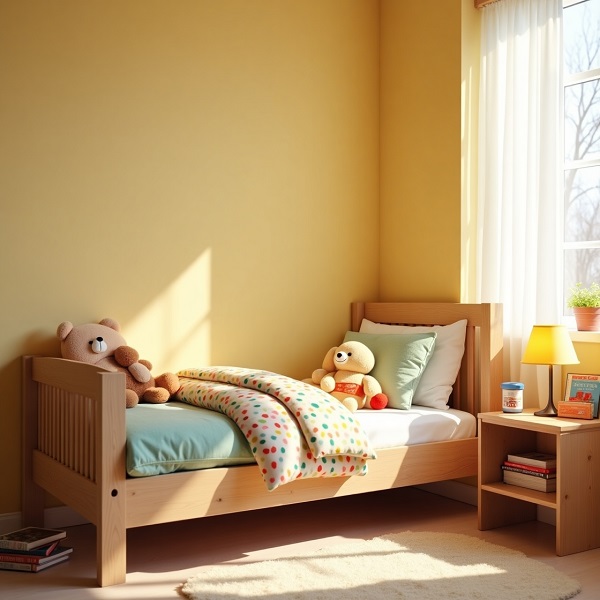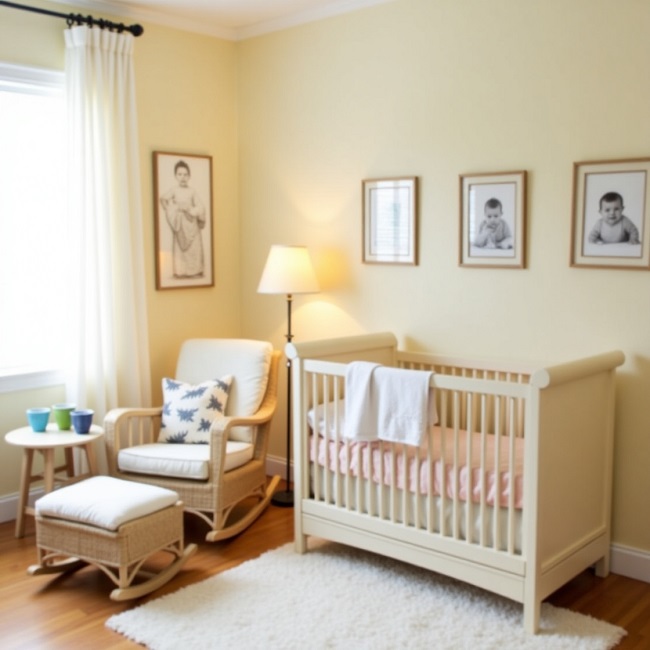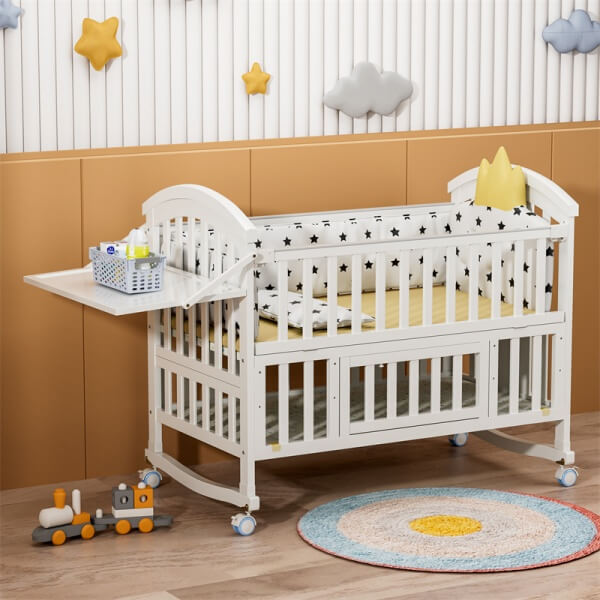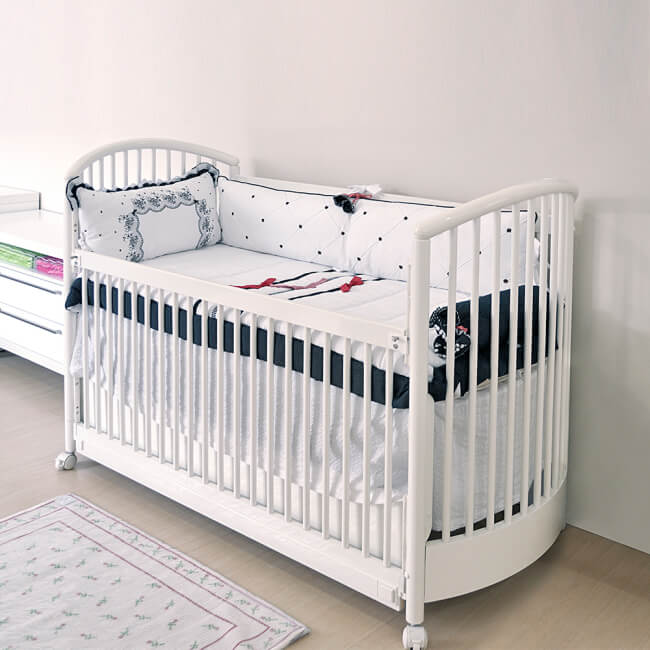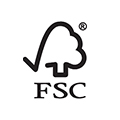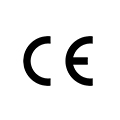When planning your list of baby supplies, you might recall seeing those soft, padded crib bumpers lining the sides of the crib in the store—adorable, cozy, and seemingly protective. “They’ll keep my baby from bumping their head or getting stuck between the bars,” you think. It’s a logical assumption—one many parents make. After all, who wouldn’t want to cushion a baby’s head from hard wooden bars?
But here’s where instinct and evidence collide.
What was once marketed as a solution to prevent injuries is now widely discouraged by pediatricians and safety experts—some even calling for outright bans. Because over the past 15 years, research has revealed a disturbing link between crib bumpers and infant sleep deaths.
So what changed? Why are crib bumpers no longer recommended, and what do the latest pediatric guidelines say? More importantly, what should you do if your baby keeps bumping into the crib rails or gets their arm caught between the slats?
What Are Crib Bumpers?
At first glance, crib bumpers seem like a simple solution—a padded barrier between your baby and the hard wooden slats of their crib. Typically made from soft fabrics like cotton or polyester and filled with foam or batting, these liners wrap around the inside perimeter of the crib, secured with ties or Velcro.
The original idea behind crib bumpers was simple: prevent babies from bumping their heads or getting their arms and legs caught between the slats—a seemingly reasonable solution for a common concern.
Crib bumpers weren’t always controversial. Decades ago, crib slats were spaced wider apart, creating a legitimate risk of babies slipping through or getting trapped. Bumpers served a practical purpose then. But since 1974, U.S. crib safety standards have required slats to be narrow enough (no more than 2⅜ inches apart) to prevent this.
The bottom line? Crib bumpers are a solution to a problem that no longer exists—with risks that outweigh any perceived benefits. Up next, we’ll break down exactly what those risks are.
What Are the Risks of Using Crib Bumpers?
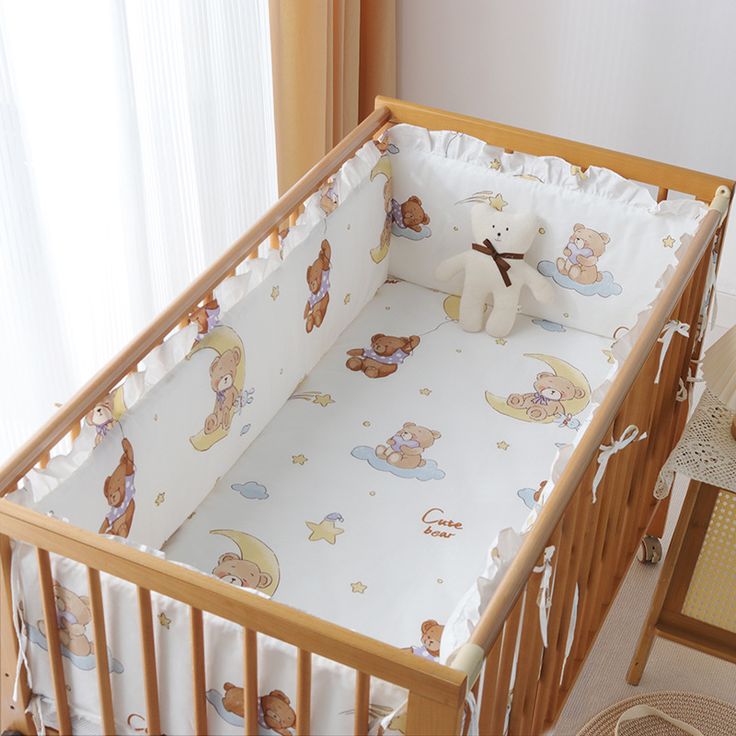
Crib bumpers might look harmless, but research reveals they pose multiple serious risks to infants. These dangers aren’t just theoretical—they’ve contributed to tragic, preventable infant deaths.
Suffocation
Infants under 12 months don’t have the strength or coordination to turn their heads or push themselves away from obstructions. If a baby’s face ends up pressed against a padded bumper, especially during sleep, they may not be able to breathe properly.
A 2016 study in The Journal of Pediatrics analyzed 48 infant deaths directly attributed to crib bumpers, with many more cases likely unreported.
Strangulation Risks from Ties and Gaps
Traditional bumpers are often tied to the crib with long ribbons or strings. If a baby becomes entangled in these, especially as they begin to roll or explore their crib, the results can be tragic. The Consumer Product Safety Commission (CPSC) has documented cases where infants died this way.
Increased Risk of Overheating
Crib bumpers can trap heat inside the crib, particularly if they’re thick or made with synthetic fabrics. This contributes to a warmer sleep environment—a known risk factor for SIDS (Sudden Infant Death Syndrome). The AAP’s safe sleep guidelines explicitly warn against anything that could trap heat around a baby.
It’s easy to assume that these incidents are rare or avoidable with vigilance. But part of what makes them so dangerous is that they’re often silent. A baby may not cry or struggle if they’re slowly losing oxygen. Many of these tragedies have occurred while a parent believed their child was peacefully sleeping just a few feet away.
At the heart of the issue is a stark truth: crib bumpers may look gentle and protective, but the risks they pose are far more serious than a bumped arm or a minor bruise.
The question experts are now asking isn’t whether bumpers work—it’s whether they’re worth the risk. And increasingly, the answer is no.
What Do Experts Recommend? Are Crib Bumpers Banned?
If you’re wondering whether crib bumpers are still considered safe today, the answer from pediatric experts is a firm and consistent no.
The AAP has recommended against the use of crib bumpers since 2011. In its most recent policy statement, updated in 2022, the AAP reaffirmed that “crib bumpers have no place in a safe sleep environment”. Their reasoning is simple: bumpers provide no proven benefit in preventing injury and present real, documented risks, including suffocation, entrapment, and strangulation.
The CPSC has also taken action. In May 2022, the CPSC finalized a rule under the Safe Sleep for Babies Act, effectively banning the manufacture and sale of padded crib bumpers in the United States. The regulation classifies padded bumpers as a hazardous product and prohibits their distribution in any form.
Internationally, similar trends are emerging. Health Canada, for instance, advises that “crib bumper pads should not be used” due to the risk of suffocation and strangulation. The National Health Service (NHS) in the UK echoes this, warning parents to “keep your baby’s crib clear of anything soft, including bumpers.”
If you’re designing a nursery or preparing for your baby’s arrival, this might feel like a departure from what was once common practice, but parenting is often about adjusting with new knowledge. Pediatric experts deliver a clear and firm message: the safest sleep environment for a baby is a bare crib.
Are Mesh Crib Bumpers a Safer Alternative?
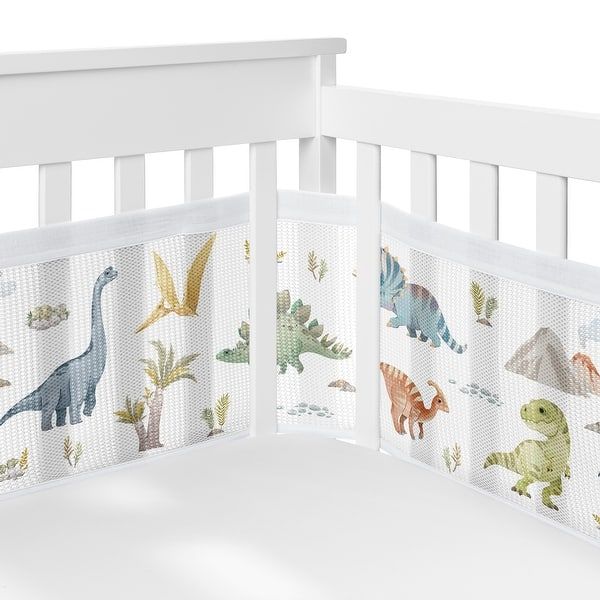
As traditional padded crib bumpers have faced increasing scrutiny and regulatory bans, many parents have turned to what seems like a compromise: mesh crib bumpers, often marketed as “breathable,” “airflow-friendly,” or “suffocation-resistant.”
At first glance, mesh liners seem to address the primary concern linked to traditional padded bumpers by allowing better airflow and reducing the risk of suffocation. But are they really safe?
The short answer: not necessarily.
Although some manufacturers promote mesh or “breathable” bumpers as a safe alternatives—but even these have not been endorsed by the AAP.
First, the very structure that makes mesh bumpers more breathable also creates entanglement risks. Babies can become entangled in the mesh fabric or the ties used to attach it to the crib, posing risks of suffocation or strangulation.
Second, even “breathable” materials can become compressed when a baby presses against them, potentially creating a suffocation hazard. Claims about “breathability” have yet to be thoroughly tested in actual infant sleep settings, and there is currently no standardized safety benchmark that manufacturers must meet for airflow in crib bumpers or liners.
The Safe Sleep for Babies Act, enacted in 2022, broadly bans the manufacture and sale of all crib bumpers that are padded or designed to surround the interior of a crib—regardless of the material used. That means even breathable mesh versions can fall under the ban if they meet the criteria.
Can You Use Bumpers When the Baby Is Older?
Many parents wonder if crib bumpers become safer once a baby is past the newborn stage—perhaps when they can roll over, sit up, or even stand.
The answer from pediatric experts is still no—the risks don’t disappear with age; they simply change form, and in some cases, the hazards become even more pronounced.
First, around six to nine months of age, many babies start pulling themselves up and cruising along the crib rails. At this stage, bumpers—especially the padded ones—can act like a step or foothold, giving babies just enough leverage to climb and fall out of the crib, potentially leading to serious injury.
Moreover, entanglement remains a danger, regardless of age. If the bumper comes loose or has fabric ties, a curious or playful baby could get tangled or wrap it around themselves.
As babies grow stronger, they can wedge themselves between the bumper and the crib slats in ways that younger infants cannot. This entrapment can lead to positional asphyxiation, where a baby’s body is stuck in a posture that restricts breathing, even if their face remains uncovered.
It’s also worth considering that as your child grows, the need for bumpers doesn’t increase—it decreases. Older infants and toddlers are better able to move around, shift positions, and even avoid minor bumps on their own. What might have seemed like a necessary cushion early on becomes completely unnecessary—and even risky—as the child becomes more mobile.
What if My Baby Keeps Hitting the Crib Bars?
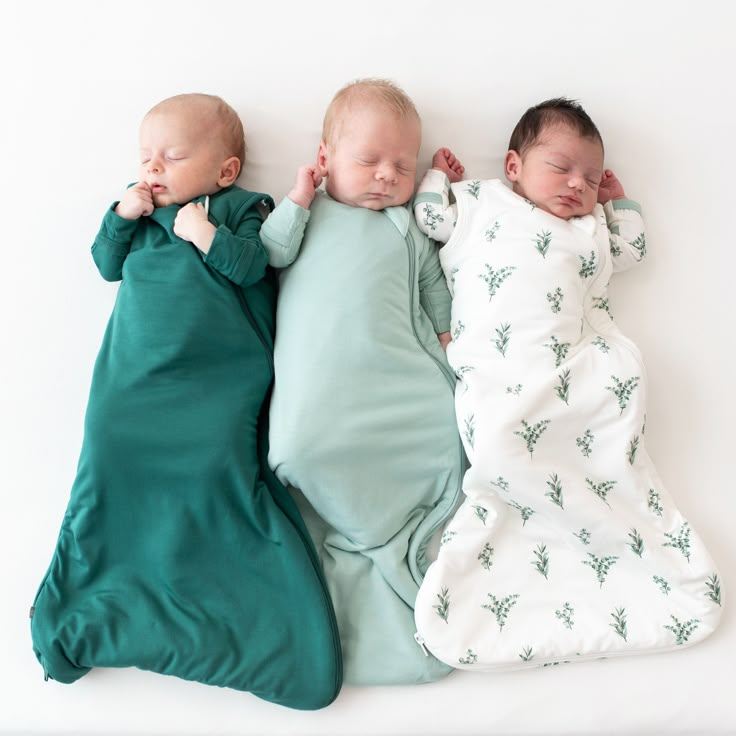
When your baby rolls during sleep and bumps against the crib bars, waking with a startled cry, it’s natural to want to soften the space—maybe even reconsider those banned crib bumpers.
Pediatricians stress that minor bumps against crib slats—a common parental concern—are actually harmless and far less dangerous than the risks introduced by bumper pads.
First, know this: babies bumping into crib slats is extremely common, especially during the early months when they’re learning to roll, scoot, or find their sleep rhythm. The reassuring news is that these bumps are usually harmless and don’t result in serious injury. Babies have flexible bones, and their heads are built to withstand small knocks much better than we often assume.
Moreover, today’s safety standards require that crib slats be spaced no more than 2⅜ inches apart. This narrow spacing is intentional—it’s designed to keep a baby’s head, arms, and legs from slipping through or getting stuck. In other words, the risk of limb entrapment is already minimized by the crib itself, making crib bumpers unnecessary for this purpose.
That said, no one likes seeing their child uncomfortable. So, what can you do if your baby keeps rolling into the bars? For instance, you can:
Individual Crib Rail Covers: It is typically made of soft silicone or fabric. Unlike full crib bumpers that line the entire perimeter, these covers attach to specific slats where the baby most often makes contact.
Adjusting Sleep Position: Gently repositioning your baby toward the center at bedtime can reduce nighttime collisions with the slats. Over time, many infants naturally find a comfortable spot where they’re less likely to roll into the rails.
Wearable Blankets or Sleep Sacks: Dress your baby in a well-fitted sleep sack instead of loose blankets or padding. Sleep sacks reduce startling reflexes that can lead to sudden arm or leg movements against the crib.
Extra Tummy Time: Studies show that babies who get plenty of tummy time and opportunities to move freely tend to sleep more soundly at night, and they are also less restless during their sleep, which naturally decreases the likelihood of hitting the crib bars.
Conclusion
From suffocation and entrapment to strangulation and falls, the risks tied to crib bumpers are real—and serious enough that leading pediatric authorities, including the American Academy of Pediatrics and the U.S. Consumer Product Safety Commission, strongly advise against using them. Even mesh or “breathable” versions offer no proven safety benefits and may still fall under regulatory bans.
In fact, the safest crib is a simple one: a firm mattress, a snug fitted sheet, and nothing else inside the crib. That means no pillows, stuffed animals, blankets, or bumpers.
Yes, your baby might bump into the crib slats. Yes, they might wake themselves up once in a while. But these are minor, temporary moments—nothing compared to the devastating and irreversible consequences that unsafe sleep products can bring.

